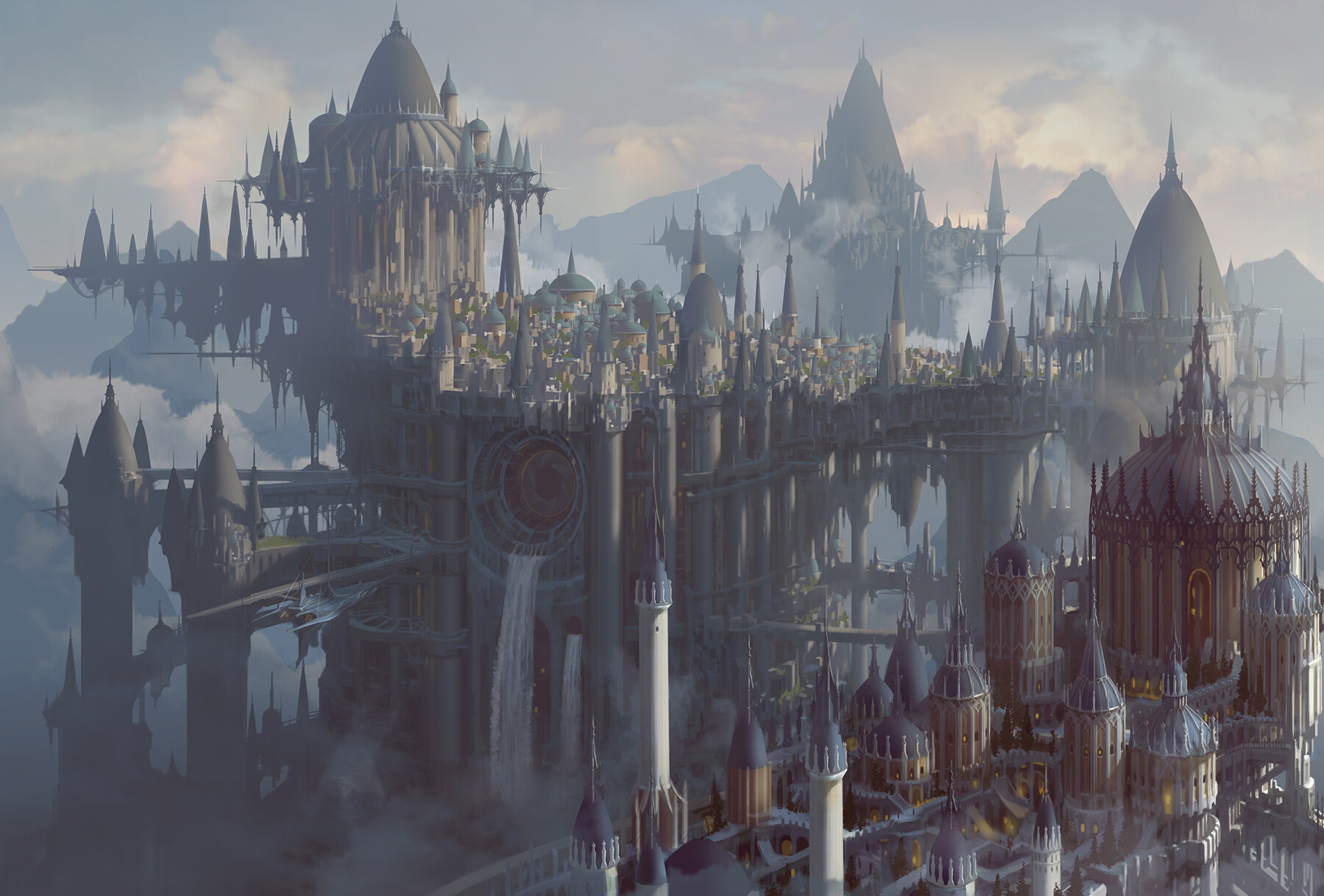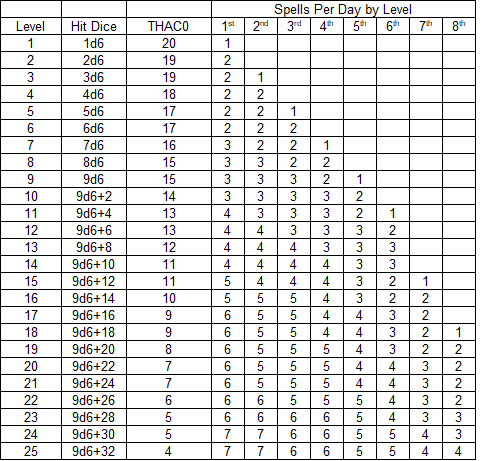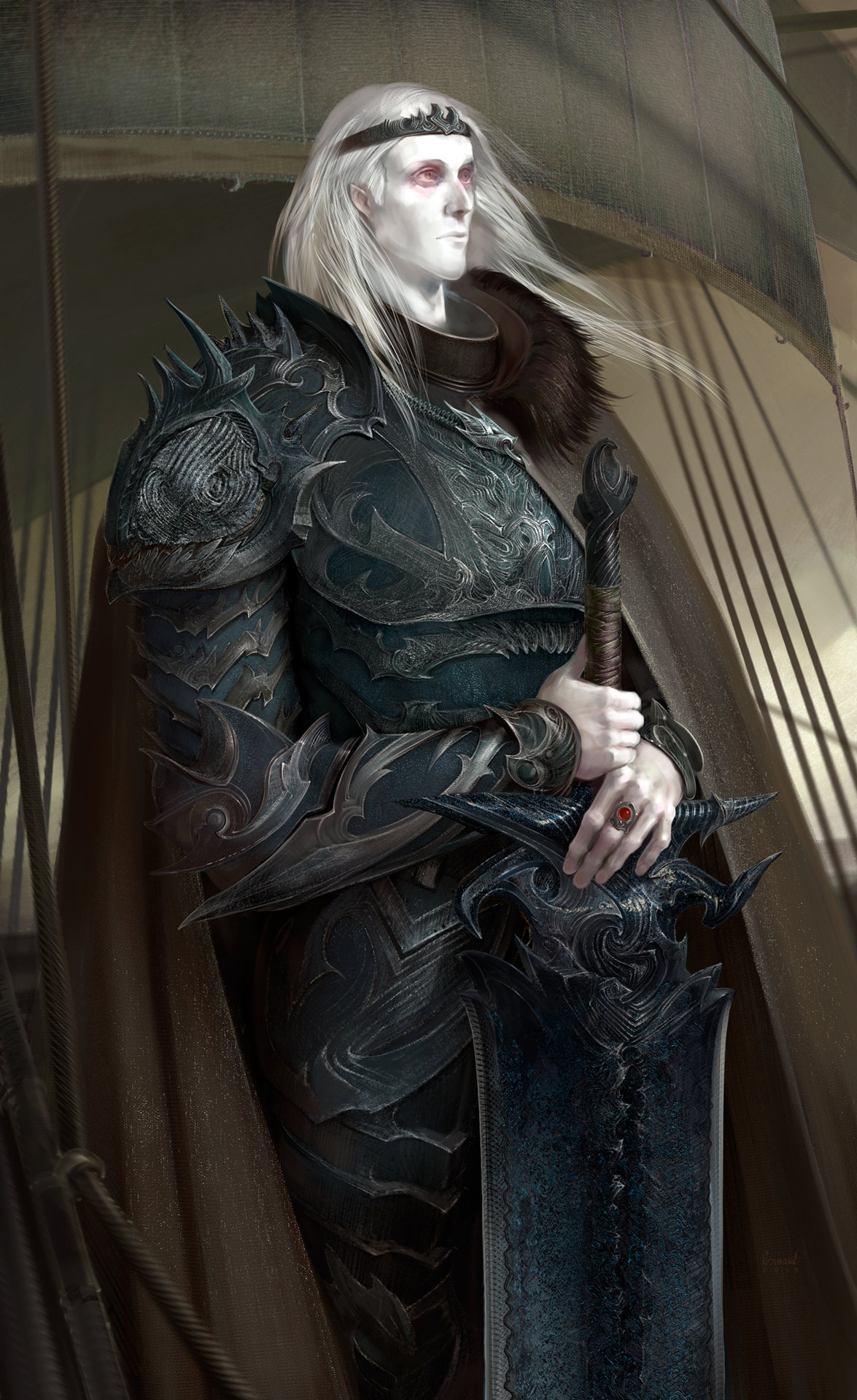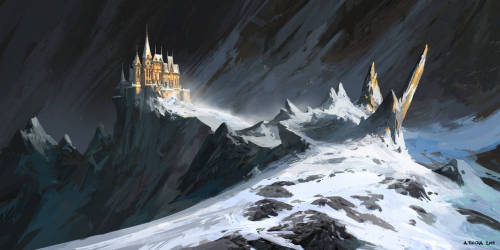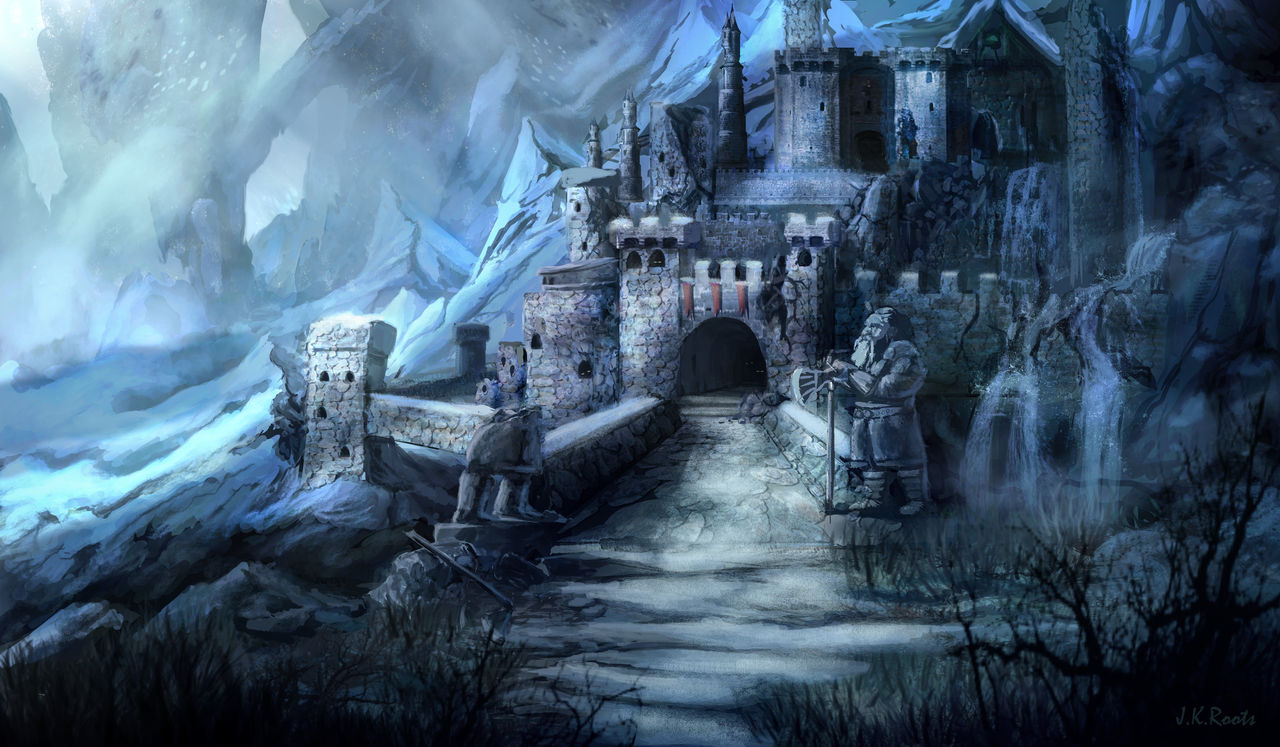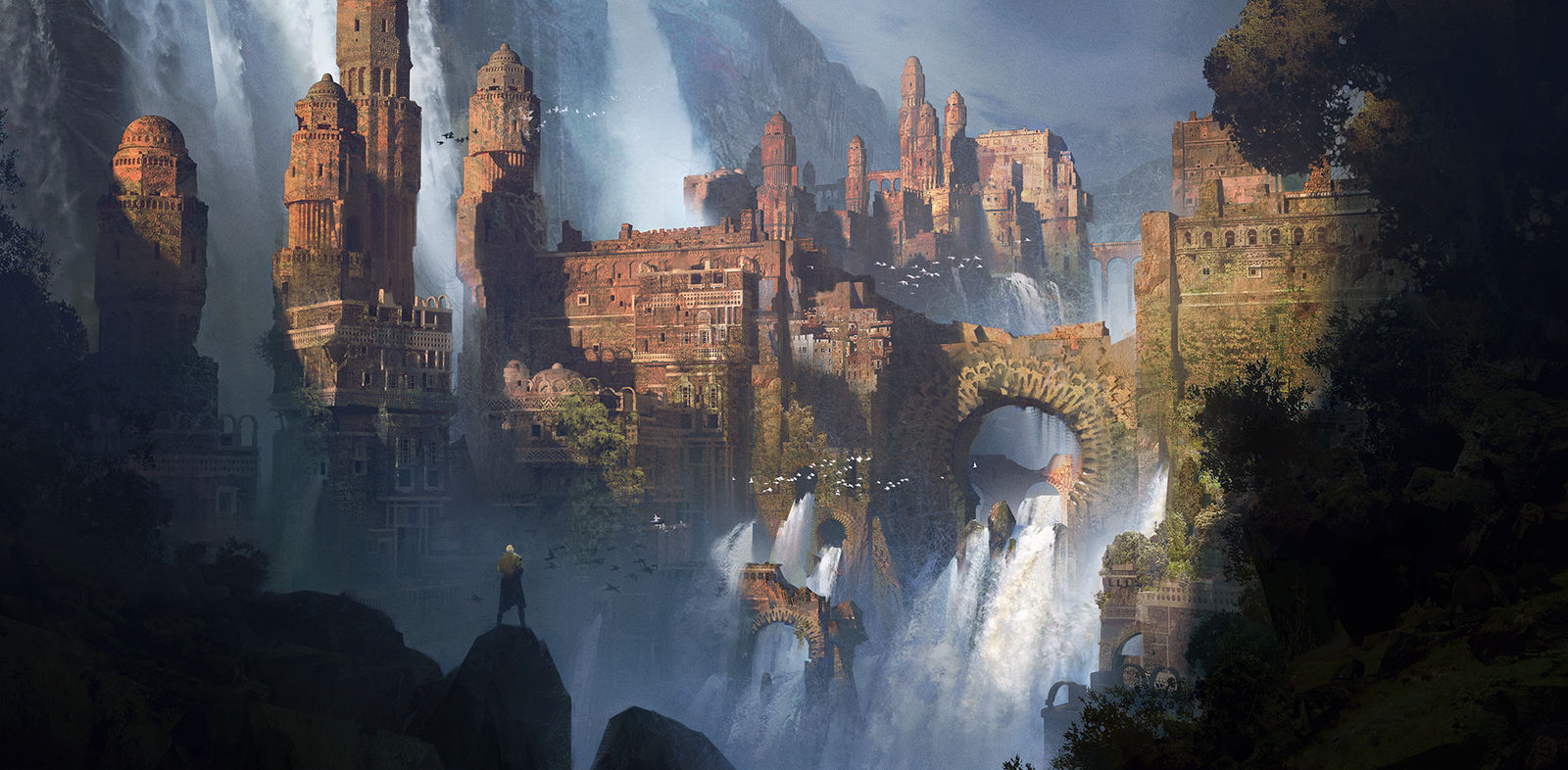Scattered throughout the dwarven kingdom of
Rockhome and also found in nearby lands such as Ylaruam,
Karameikos and Darokin, dwarves have set up fortified homes in mountainous regions across the Known World. Many of these are small enough not to be marked by cartographers - their populations typically stay below 1000 which is the demarcation point between a village and a town.
Structure and Architecture
How much is above or below ground? This varies, as does the architectural style. Most dwarf strongholds will have some of both - a visible part above ground which may be like a human fortified town or village, or perhaps a fortress with towers, curtain walls and a keep. The entrance to the underground part is sometimes large enough that carts pulled by mules and donkeys can get through with trade goods and supplies. Other times it may be narrow enough for a single dwarf to block it - useful if under attack. These entrances are often trapped or at least offer tactical advantages for the defenders such as murder holes, firing ports from side chambers and perhaps a pit with a drawbridge. How much of the stronghold is underground will vary, but most dwarf strongholds are around 1/4 above ground, 3/4 below. There are of course some where the surface structure is minimal - perhaps a fortified gate set into the mountainside. In terms of building style some dwarf strongholds will be simple, while others, typically of the wealthier families, will have fine carvings, imported stone and bronze and brass fittings, looking quite baroque. Some may feel small and claustrophobic, while others will have great vaulted ceilings supported by pillars like medieval cathedrals.
Politics
Most strongholds are owned and inhabited by a single dwarf family. The leader of this extended family is a dwarf of considerable renown and often of great fighting prowess - stronghold chiefs are expected to be the military leaders and champions of their families. Such chiefs are usually referred to as Dotars, particularly if their strongholds have fewer than 1000 dwarves. If the stronghold holds 1000 or more inhabitants, the chief is entitled to sit in the Senate of Rockhome in Dengar as a Senator (Krey). If a chief becomes old and infirm he may well step down and hand over to his heir - abdication is considered far more honorable than trying to lead when ineffective. Sometimes a Dotar will make the political and judicial decisions but leave military matters to the captain of the stronghold's forces, who is then referred to as the Evedar. As is the nature of dwarves, rightful authority is respected and although there may be disagreements about how things are done, coups and hostile takeovers are very rare, and only happen when something has gone very wrong indeed.
In terms of relations with the King in Dengar, most strongholds within Rockhome are loyal. Even those that are mostly independent offer nominal fealty. Open rebellion is very rare, and usually invites exclusion and economic sanctions rather than direct military action. There are dwarf strongholds beyond Rockhome's official borders, including in Karameikos (particularly the Altan Tepes but also the Black Peaks), Ylaruam and Darokin. These strongholds often feel torn, or at least keeping a delicate balance, between political allegiance to the realm they are actually in, and cultural and spiritual belonging to their dwarven homeland of Rockhome. If these other nations went to war against Rockhome these expatriate strongholds would have to decide who to support - and many would support Rockhome.
In terms of the seven great clans, a dwarf stronghold will usually identify itself with one of these (Buhrodar, Everast, Hurwarf, Skarrad, Syrklist, Torkrest or Wyrwarf), typically based on the lineage from which the resident family is from. There are a few strongholds that refuse to declare their clan allegiance and instead consider themselves clan-neutral.
Defences
Dwarf Strongholds typically have a standing force of about 1/10th of their population, so a stronghold with 800 dwarves will have a force of 80 professional dwarf soldiers (2nd level dwarf warriors). However, in the event of an attack about 1/3rd of the population can pick up weapons and join in the defence of their home (1st level dwarf warriors). Any stronghold worth its name will be in a constant state of preparedness for a possible attack, usually by hated goblins or orcs, with guards at their posts, ammunition and supplies stockpiled and all inhabitants knowing what to do if the alarm should be raised. Dwarves are the undisputed masters of defending strongholds.
Dwarves rarely launch military expeditions beyond their strongholds - being caught in the open can prove disastrous as the dwarves of Tarrag Duun found out to their cost. However, when the kingdom of Rockhome is threatened by a major invasion, a stronghold chief will often send a contingent to join the national army - typically this is half of their professional soldiers plus any plucky young dwarves wanting to join on an adventure and earn some glory. So the stronghold with 800 dwarves may send 40 professional soldiers and perhaps 20 eager volunteers to join the King's army. Loyalty to the king is a factor here, as are any immediate threats to the stronghold that may mean a chief keeps his forces at home.
Trade and Industry
Mining and metalwork is the heart of dwarven industry, and many strongholds start off as mines that then expand to become towns and fortresses as well. However, even the toughest of dwarves cannot eat metal, so every stronghold needs to have a supply of food. This can be grown in the valleys below the stronghold, or imported from further afield. There are some that have taken agriculture underground and turned it into fungiculture - mushrooms and toadstools grown in dark damp caverns become their staple food. Although not always tasty, such fungiculture will make a stronghold quite self-sufficient. Beyond food, strongholds will generally need to trade with other communities, both dwarven and other races, for supplies and materials they cannot create themselves. Popular materials include leather, cloth, wood and metals (even if the stronghold is also a mine, it usually mines only one metal such as iron, and will need to trade for other metals such as gold, copper or lead). Pack animals, livestock, wines and spirits, weapons and tools are all useful. Of course, this trade requires reliable travel to and from the stronghold, and dwarves will vigorously patrol their necessary trade routes, protecting them from bandits and monsters, as well as clearing landslides and mending bridges across chasms.
Culture and Religion
Most strongholds will have a few dwarf clerics, typically 1 in 200 dwarves. Even the smaller strongholds with less than 100 members may have a dwarf cleric visiting or on loan from a larger community. There are a few strongholds that are not interested in clerics or religion at all - such "secular" strongholds will need to find other ways of healing and curing the sick. Others (particularly those loyal to clan Buhrodar) may swing the other way and have more than their fair share of clerics (perhaps 1 for every 50 dwarves) who may prove unduly influential on the chief and his advisors and lieutenants.
Strongholds are typically self-sufficient in terms of entertainment, and each one will have some talented dwarves who can play instruments, sing ballads or tell epic tales of ancient dwarven heroes. The visual arts are usually based around sculpture rather than drawing or painting, and dwarf homes with disposable income may have a bust of a revered family member sitting on a pedestal. Travelling bands of dwarf entertainers may visit, putting on shows of theatre, harmonic singing and occasionally juggling and acrobatics for a few days before moving on to the next audience.
The dates of importance mentioned in the Gazetteer are generally observed by each stronghold, though different strongholds and families will put different emphasis on different dates and perhaps observe them in slightly different ways.
Role in Adventures
- The stronghold may be under attack. Although this is usually orcs and goblins, it could be something more unusual such as giants, a dragon or giant vermin.
- The stronghold may have turned hostile, either against the rest of Rockhome or against someone else who is not normally an enemy. The adventurers are asked to assist with negotiations and perhaps investigate why the change in attitude.
- The stronghold is a safe base for adventurers to investigate a nearby dungeon. Although the dwarves will expect fair payment for food, lodgings and healing, a successful adventurer will have plenty of loot to pay with.
- There is something wrong inside the stronghold that needs investigating. A murder, a theft, evidence of a Cult of Chaos. Perhaps this is the work of evil dwarves (though rare they do exist) or perhaps something else has infiltrated the stronghold (doppelgangers can easily imitate dwarves). Werebeasts are nearly always human but there might be variants that affect dwarves (were-badgers?)
- Nobody has heard from the stronghold for several weeks and surrounding communities are worried. The adventurers are asked to investigate.
- The stronghold has been abandoned for some time after some disaster (military attack? plague?) but now dwarves want to reclaim the stronghold, and they have asked the adventurers to assist in clearing out any monsters.
